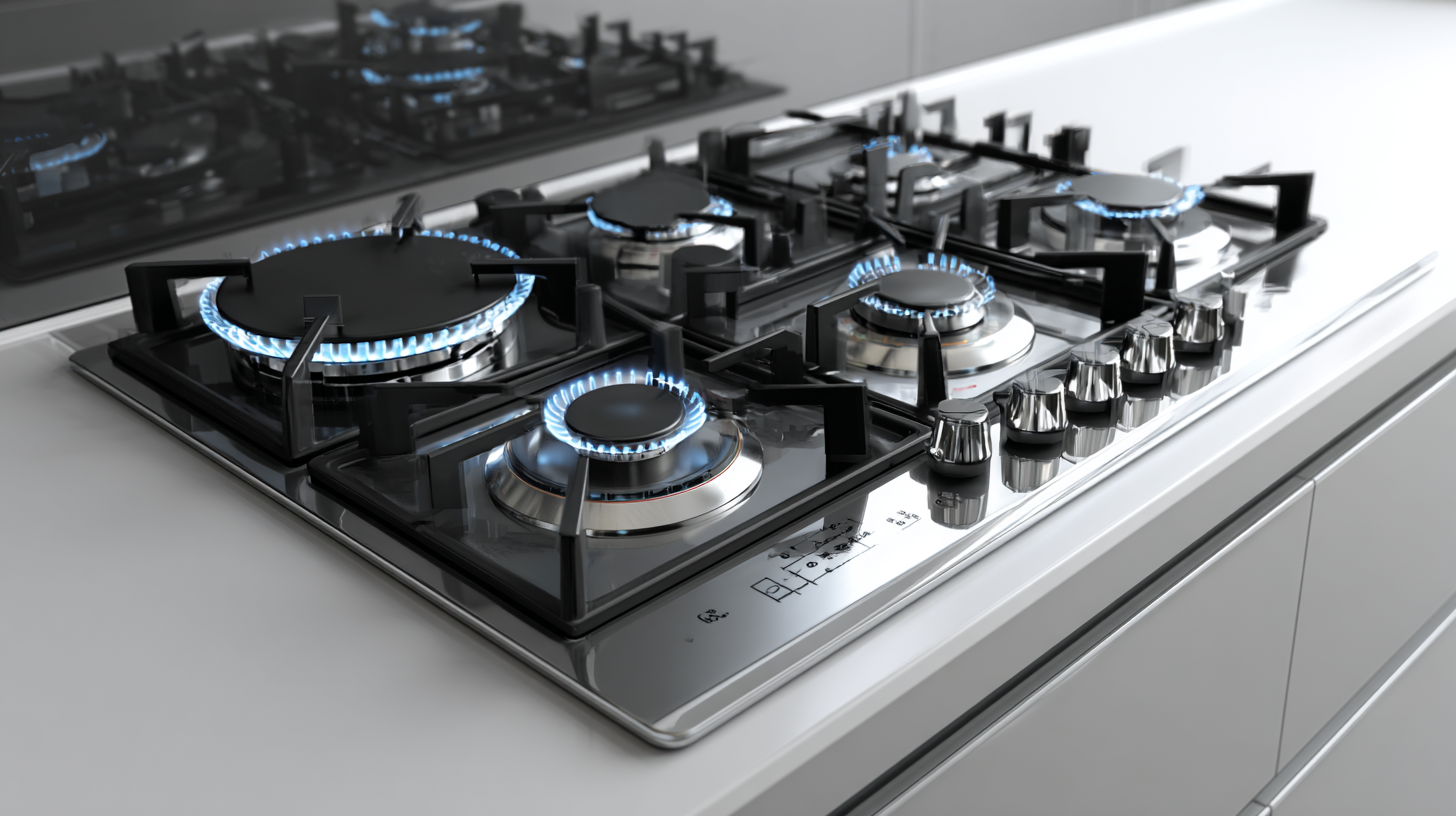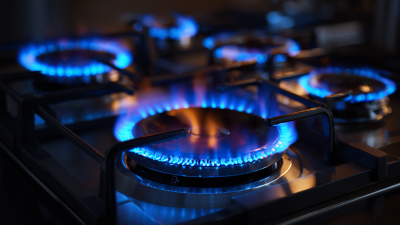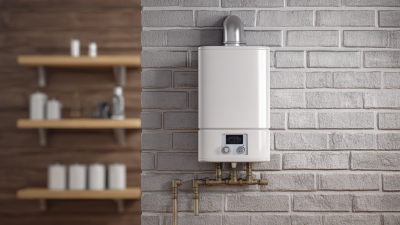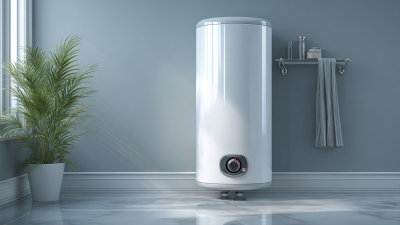
In today's culinary landscape, the kitchen is often considered the heart of the home, and choosing the right equipment is essential for both performance and safety. The China Gas Stove has emerged as a popular choice among homeowners and chefs alike, particularly due to its efficiency and precision in cooking. According to a recent industry report by IBISWorld, the demand for gas stoves in the Asian market, especially in China, has seen a steady growth rate of 5.2% annually over the past five years, driven by a rise in culinary interests and modernization of kitchen appliances. With various options available, from compact models to high-capacity stoves, selecting the perfect China Gas Stove can dramatically enhance your cooking experience while ensuring energy efficiency and safety standards. This guide aims to navigate you through the essential factors to consider when making your choice, ensuring that you find the ideal product that meets your kitchen needs.

When selecting a gas stove for your kitchen, several critical factors must be considered to ensure you make the right choice. One of the foremost considerations is the stove's BTU output, which measures the heat intensity it can generate. According to a recent market report by Grand View Research, stoves with higher BTU ranges (around 15,000 to 20,000 BTUs) are increasingly favored by home chefs for their ability to boil water quickly and maintain precise cooking temperatures. This is essential for everything from searing meats to simmering sauces, significantly impacting the cooking process.
Another significant factor is the type of ignition system. Current trends show a growing preference for electronic ignition systems over traditional pilot lights, citing safety and energy efficiency benefits. The U.S. Department of Energy indicates that electronic ignitions can reduce gas consumption by up to 75%, which can lead to considerable savings on energy bills over time. Additionally, features such as sealed burners and easy-to-clean surfaces are becoming staples in modern gas stoves, enhancing cooking performance while ensuring a convenient cleaning experience. Selecting a stove that balances these features can greatly enhance both usability and sustainability in your kitchen setup.
This chart represents the key factors to consider when choosing a gas stove for your kitchen, including efficiency, price, safety features, and ease of cleaning. The data is based on general market trends and consumer preferences.
When selecting a gas stove for your kitchen, understanding the various types available is crucial. China offers several models, each with its own set of advantages and disadvantages. For instance, the traditional open-flame gas stoves, favored for their quick heating capabilities, are typically more affordable and easier to repair. However, these stoves may pose safety risks and can contribute to higher energy costs, as they tend to lose heat through radiant energy. According to a report by the China Gas Association, around 65% of households still rely on traditional open-flame models, highlighting their popularity despite the drawbacks.
In contrast, more modern designs, such as sealed burners and induction stoves, are gaining traction due to their energy efficiency and enhanced safety features. Sealed burners, for example, contain spills better and provide more precise temperature control, making them ideal for serious home cooks. The recent market analysis indicates that the demand for sealed burner models has surged by 30% in urban areas over the past three years. However, these stoves often come with a higher initial price tag, which may deter budget-conscious consumers. Balancing these pros and cons is essential for making an informed choice that best suits your cooking needs and lifestyle.
When selecting a gas stove for your kitchen, several essential features should guide your decision-making process. One of the most critical factors is the stove's BTU output, which indicates its heating efficiency. According to a report by the National Kitchen and Bath Association, a quality gas stove typically excels in delivering between 5,000 to 15,000 BTUs per burner, which provides versatility for various cooking styles—from delicate simmering to high-heat searing. Additionally, look for stoves with sealed burners, which help contain spills and are easier to clean.
Tip: Consider models with dual-fuel capabilities, offering both gas stovetops and electric ovens. This combination can enhance your cooking options while improving energy efficiency in your kitchen.
Another vital feature is the material and build quality of the stove. Stainless steel models are praised for their durability and resistance to rust, ensuring longevity in a high-use environment. A study by Consumer Reports highlighted that high-quality stoves tend to have thicker grates, providing better support for heavy cookware. Furthermore, safety features like automatic shut-off valves and flame failure devices are crucial for preventing gas leaks and ensuring peace of mind during cooking.
Tip: Don’t overlook the importance of user-friendly controls. Ignite methods like the electronic ignition can streamline your cooking process, making it both faster and safer.

 When selecting a gas stove for your kitchen, safety should be your foremost consideration. In China, where cooking with gas is prevalent, it is essential to choose a stove equipped with robust safety features. One critical safety aspect is the flame failure device, which automatically cuts off the gas supply if the flame goes out, preventing potential gas leaks and explosions. This feature is especially vital in busy kitchens where distractions can occur.
When selecting a gas stove for your kitchen, safety should be your foremost consideration. In China, where cooking with gas is prevalent, it is essential to choose a stove equipped with robust safety features. One critical safety aspect is the flame failure device, which automatically cuts off the gas supply if the flame goes out, preventing potential gas leaks and explosions. This feature is especially vital in busy kitchens where distractions can occur.
Another important feature to look for is the presence of durable ceramic or tempered glass tops. These materials not only provide a sleek aesthetic but are also designed to withstand high temperatures, reducing the risk of cracks or breakage. Additionally, stoves with child safety locks can prevent accidental ignition, offering peace of mind for households with young children. Choosing a gas stove with these essential safety features will significantly enhance your cooking experience while ensuring that your kitchen remains a safe environment.
When budgeting for a China gas stove, it is crucial to consider not only the initial purchase cost but also the long-term value it brings to your kitchen. Prices for gas stoves can vary significantly based on brand, features, and energy efficiency. While a low-cost model may seem enticing upfront, it might lack durability or advanced functionalities, leading to higher replacement or repair costs down the line. Therefore, it's essential to evaluate the balance between upfront expenses and the stove's effectiveness to meet your cooking needs.
Investing in a quality gas stove often yields better value in terms of performance and longevity. Features such as precise heat control, safety mechanisms, and energy efficiency can enhance your cooking experience, ultimately justifying a higher price tag. Moreover, considering fuel efficiency can save you money on gas bills over time. By thoughtfully assessing the cost versus value of each option, you can make an informed decision that not only fits your budget but also elevates your culinary capabilities in the long run.





